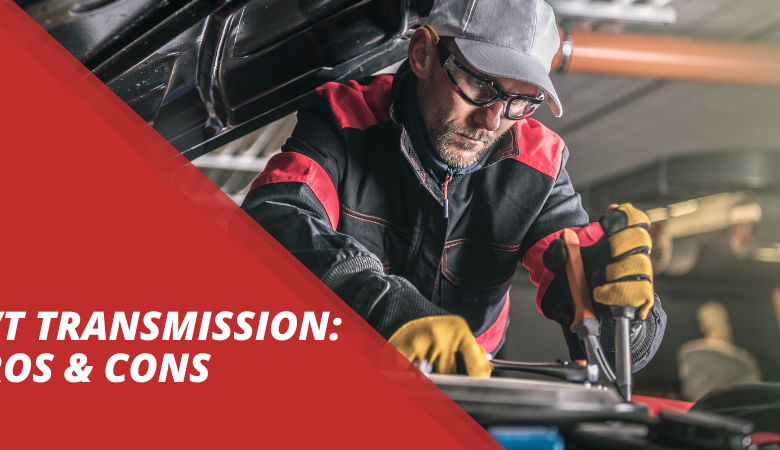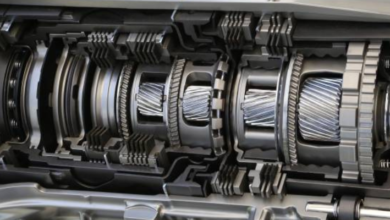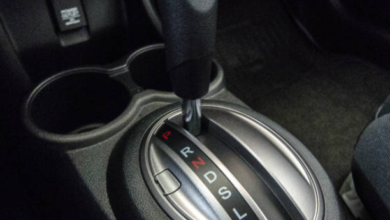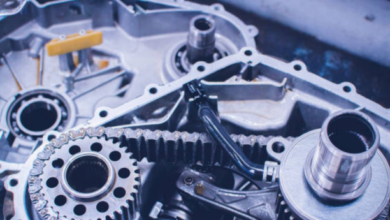CVT Transmission: Pros & Cons Guide 2024

What is CVT Transmission?
Continuously Variable Transmission (CVT) is an innovative automotive transmission technology that has gained prominence for its unique approach to transferring power from the engine to the wheels. Unlike traditional automatic or manual transmissions, CVTs do not have fixed gears but instead operate on a seamless and continuous range. This design allows for an infinite number of gear ratios, ensuring the engine operates at the most efficient level across various driving conditions.
How does a CVT Transmission works?
A Continuously Variable Automatic Transmission (CVT) operates on a unique principle, eschewing traditional gears in favor of a dynamic pulley system. The CVT consists of two pulleys – one connected to the engine (input pulley) and the other linked to the wheels (output pulley) – with a belt running between them. As the vehicle accelerates or decelerates, the effective diameter of these pulleys continuously adjusts, providing an infinite range of gear ratios. This dynamic variability ensures that the engine operates at its most efficient RPM levels, contributing to a smooth driving experience and improved fuel efficiency.
The heart of the CVT lies in its ability to seamlessly transition between gear ratios. The pulleys, controlled by a sophisticated electronic system, adapt to changing driving conditions in real-time. This adaptability eliminates the need for traditional gear-shifting steps, resulting in a continuous and uninterrupted flow of power from the engine to the wheels. The absence of discernible shifts not only enhances comfort for the driver and passengers but also allows for more responsive acceleration and improved overall performance.
CVT Transmission Pros:
Continuously Variable Automatic Transmission have gained popularity in the automotive industry due to several advantages that contribute to a smoother driving experience and improved fuel efficiency.
1. Seamless and Smooth Operation: One of the primary advantages of CVTs is their ability to provide a continuous and seamless range of gear ratios. Unlike traditional transmissions with fixed gears that shift abruptly, CVTs allow for smooth acceleration without perceptible gear changes. This feature enhances the overall driving experience, providing a comfortable and uninterrupted ride.
2. Improved Fuel Efficiency: CVTs excel in optimizing fuel efficiency by allowing the engine to operate at the most efficient RPM (revolutions per minute) levels. The continuous adjustment of gear ratios ensures that the engine remains in its optimal power band, resulting in better fuel economy. This efficiency is particularly noticeable during city driving and stop-and-go traffic conditions.
3. Responsive Acceleration: The dynamic nature of CVTs enables responsive acceleration. The transmission can quickly adjust the gear ratio to match the driver’s throttle input, providing immediate and smooth acceleration. This responsiveness contributes to a more enjoyable and dynamic driving experience, making CVTs a preferred choice for those who appreciate agility on the road.
4. Versatile Performance: CVTs adapt well to a variety of driving conditions. Whether cruising on the highway or navigating through urban traffic, the transmission adjusts seamlessly to provide optimal performance. This versatility makes CVTs suitable for a wide range of vehicle types, from compact cars to SUVs, enhancing their widespread adoption in the automotive market.
5. Continuous Power Delivery: Unlike traditional transmissions that may experience interruptions during gear changes, CVTs deliver a continuous and consistent flow of power to the wheels. This results in a more refined and predictable driving experience, especially in situations that require a steady application of power, such as climbing hills or maintaining a constant speed on the highway.
CVT Transmission Cons:
While Continuously Variable Automatic Transmission offer several advantages, they are not without their criticisms and concerns. Here are some of the drawbacks associated with CVT transmissions alongwith transmission slipping:
1. Limited Towing Capacity: CVTs are generally not recommended for heavy-duty applications or vehicles with high towing requirements. Traditional automatic transmissions with fixed gears often outperform CVTs in scenarios that demand significant towing capacity, as the continuous variable nature of CVTs may lead to overheating or excessive wear under heavy loads.
2. Durability Concerns: There have been historical concerns regarding the long-term durability of some CVT designs. In the past, issues such as overheating, belt wear, and reliability concerns have been reported. However, it’s crucial to note that advancements in CVT technology have addressed many of these concerns, and modern CVTs are designed with improved durability and longevity.
3. Limited Sporty Feel: Some driving enthusiasts and sports car enthusiasts find CVTs lacking in providing the “sporty” feel associated with traditional automatic transmissions or manual gearboxes. The continuous and smooth operation of CVTs, while efficient, may not offer the same level of engagement for those who enjoy more dynamic driving experiences.
4. Maintenance Complexity: Repairing or maintaining CVTs can be more complex and may require specialized knowledge and equipment. Traditional transmissions, with their fixed gears, are often easier and less expensive to repair. Additionally, not all automotive technicians are equally experienced or equipped to handle CVT maintenance, which could lead to higher service costs in some regions.
5. Noise Under Heavy Loads: In certain situations, particularly when accelerating under heavy loads, CVTs can produce a distinct engine noise that some drivers find less appealing than the sound associated with traditional transmissions. This noise is a result of the continuously changing gear ratios and may be more noticeable during rapid acceleration or high-speed driving.




